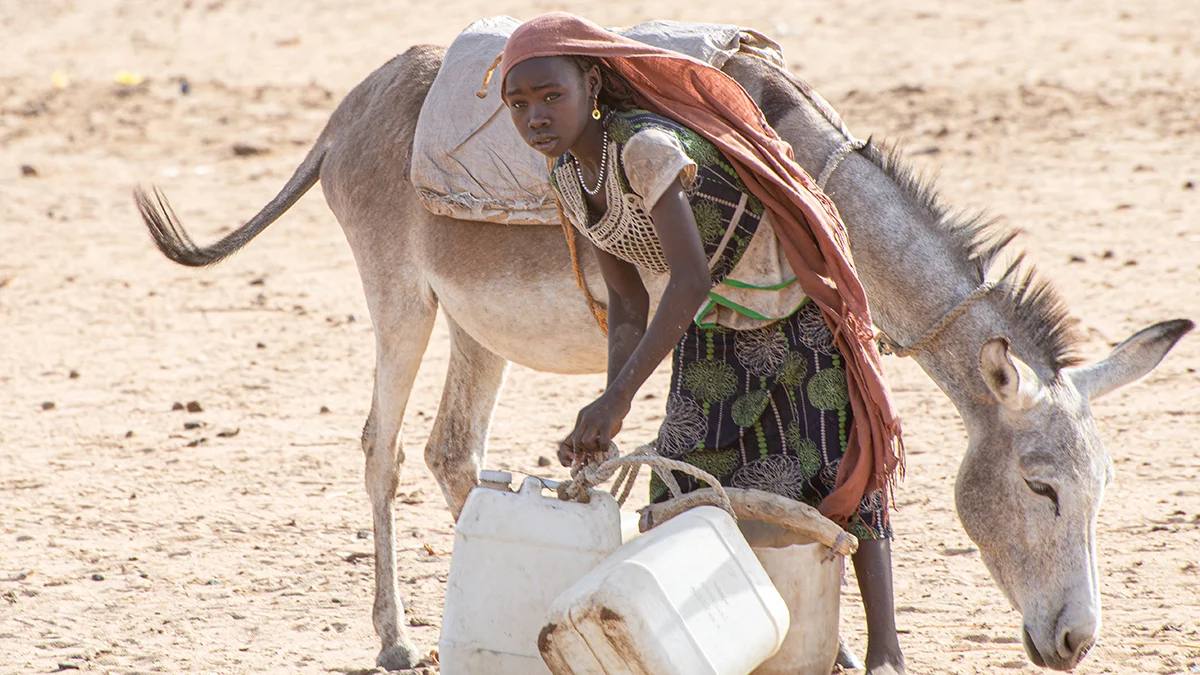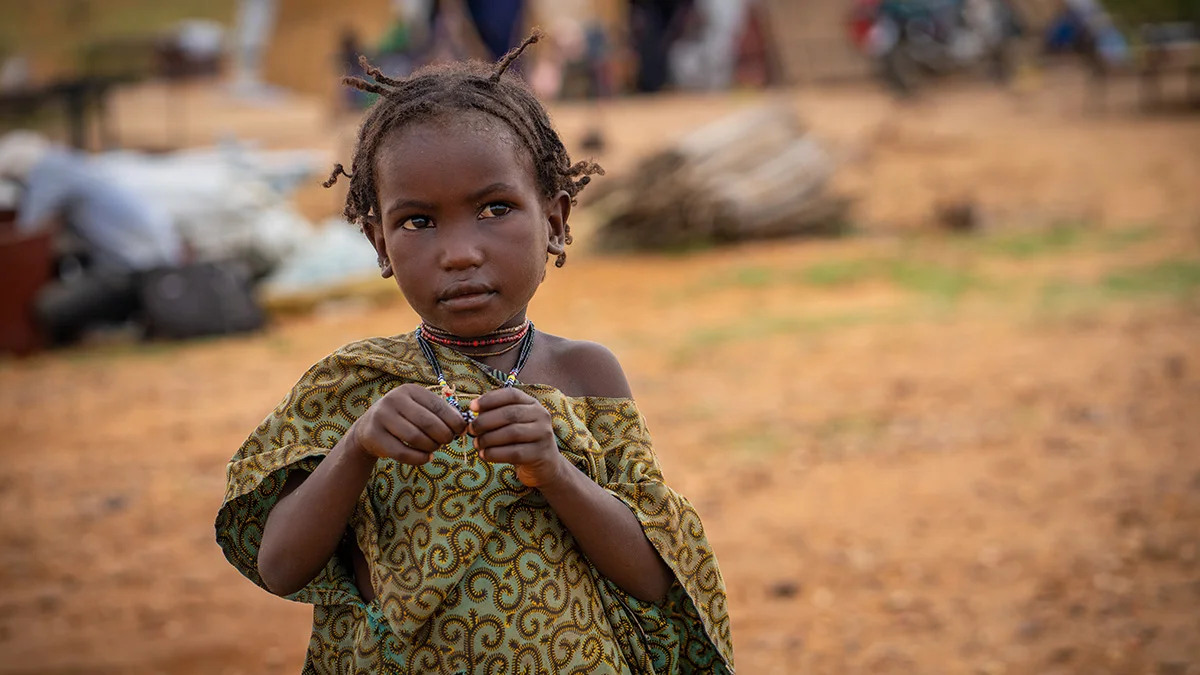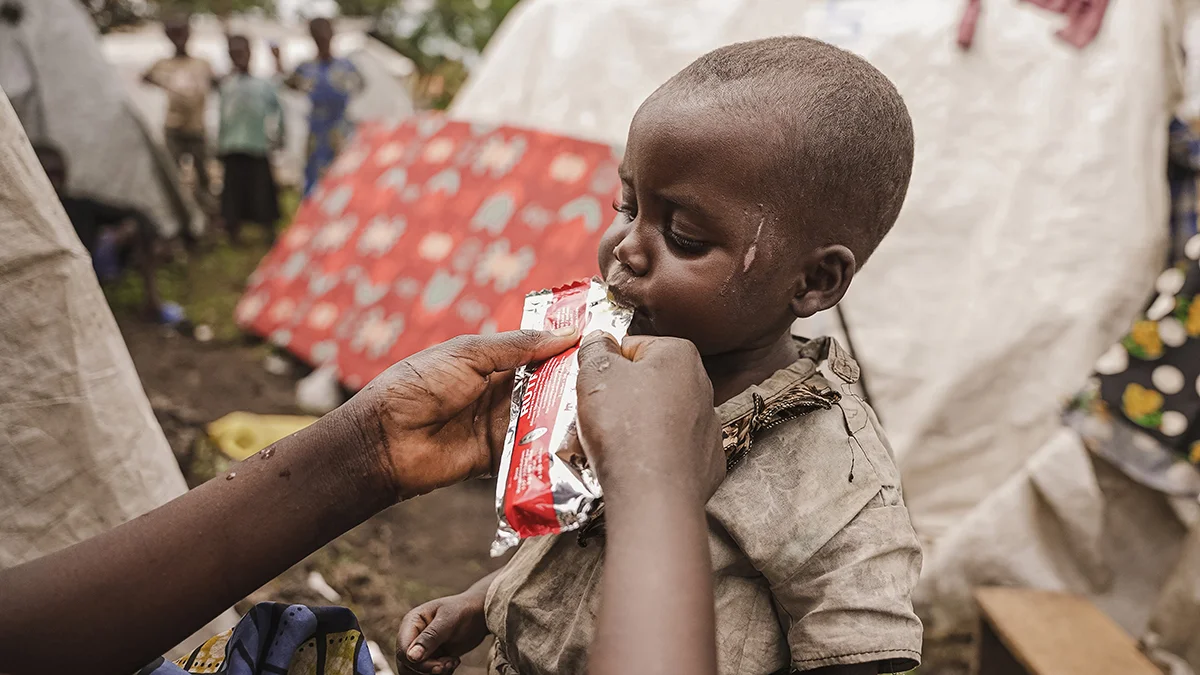There have never been as many child refugees as there are today. The numbers are dramatic: of the 108.4 million forcibly displaced people (in 2022), 43.4 million are children. Almost two million of these were born as refugees.
The situation
Wars, natural disasters and poverty are forcing more and more people to leave their homes. One in six children now live in a conflict or disaster zone. More than a third of displaced children come from sub-Saharan Africa (3.9 million), a quarter from Europe and Central Asia (2.6 million), and 13 percent (1.4 million) from the Middle East and North Africa.
Uprooted children, whether they are refugees, asylum seekers or internally displaced persons, can be exposed to serious dangers. This is especially true for the hundreds of thousands of children who are unaccompanied or separated from their parents, as these are at greater risk of human trafficking, exploitation, violence and abuse. Around 34 percent of human trafficking victims worldwide are children.
Why do so many children have to flee?
One in six children now live in a conflict or disaster zone. In 2022, more than half of all displaced children worldwide came from only three countries: Syria, Afghanistan and South Sudan. Almost three-quarters of children that either had to flee or were displaced within their own country came from only five countries: Syria, Afghanistan, South Sudan, Venezuela and Myanmar.
Around one billion children are extremely vulnerable to the impacts of the climate crisis. These children are exposed to multiple climate shocks associated with inadequate basic services such as water, sanitation and healthcare. In 2021 alone, 7.3 million children were newly displaced as a result of natural disasters.
Despite progress being made, a total of 365 million children suffer from extreme poverty, meaning they have to survive on less than USD 2.15 per day. Poor families often lack the time and energy to attend school. At the same time, hunger weakens children and their families. This creates a vicious cycle: poverty and hunger prevent education, but education can prevent poverty. Many children and families therefore see no other way out than to leave home in the hope of a better future.
How your donation helps
Finally getting to be a child again and being able to learn and play in a safe place is not something that child refugees can take for granted. They often spend years in refugee camps or have to move from one camp to the next. Our goal is not only to provide these children with basic necessities such as medicine, food and water, but also to create local safe spaces for them where they can learn, play and dream.
Protecting child refugees is a top priority for UNICEF. UNICEF has therefore launched a six-point plan known as the Agenda for Action. Its aim is to urgently protect child refugees from violence, exploitation, discrimination, xenophobia and captivity. Separation from parents must be avoided whenever possible. Children must also be granted the right to education and access to health services. In emergencies, UNICEF is one of the first organizations on the ground delivering important supplies, offering psychosocial support and working to return children to normality as quickly as possible. In addition to child-friendly zones where children can play, mothers can feed their babies and separated families can be reunited, UNICEF works to ensure that all governments find long-term solutions that respect children’s rights. This allows girls and boys to be children again and still have a future in spite of the difficult conditions.
Please help us give these children hope and a future.



